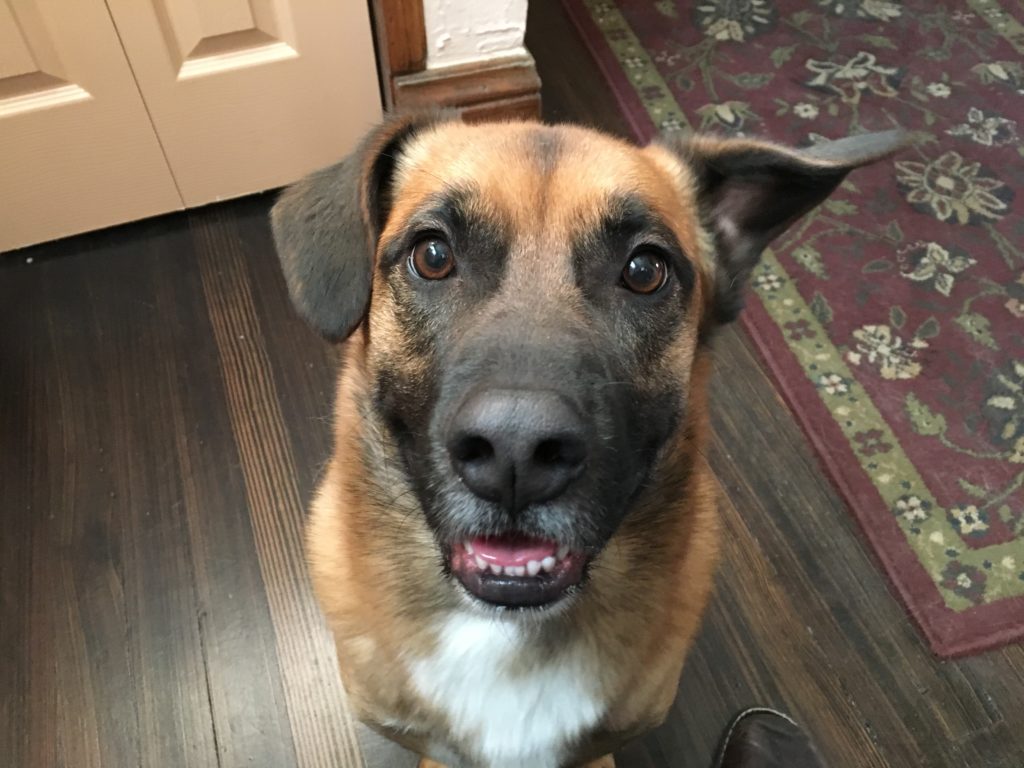Tips to Stop a Dog From Aggressive Behavior While on the Leash
By: David Codr
Published Date: December 31, 2016
Charming is a two-year-old Corgi, Vizsla, Border Collie mix who lives right across the street from a house I used to live in. His guardian set up a dog obedience training session with me to stop him from jumping up, pulling on the leash and getting aggressive to other dogs when on walks also known as leash aggression.
I got a first-hand example of some of these unwanted behaviors when I arrived for the session.
I recommended that Charming’s guardian start to ignore him when she first arrives home. Many of the behaviors that he displayed when I arrived for the session are likely being introduced or reinforced when his guardian comes home and pets him in an excited state.
I recommended that the guardian start to ignore Charming anytime that he starts to display any unbalanced state of mind; including excitement. Once the dog settles down, then the guardian can attempt to pet it again. If extending her arm towards Charming results in him getting excited again, she will need to immediately retract her hand and continue on while ignoring the dog again.
If the timing of her stoppage from petting is correct, eventually charming will understand that the only way his guardian will pet him is when he is completely calm. This should I have a positive impact on his jumping up behavior as well.
This is a great example of why I came up with my pending with a purpose philosophy. Many people do not understand that anything a dog is doing while we pet it, is what the dog thinks we are petting it for. So petting an over excited dog results in a dog who gets more excited each time.
After going over the Petting with a purpose method, I shared some nonverbal communication cues to help the guardian better communicate what she did and did not want from her dog. I made sure to stress how important it will be for her to correct or reward the dog within three seconds in order for the dog to understand what she is communicating. Reacting to soon or too late is one of the most common mistakes many dog guardians make.
Discussing the situation with he is guardian, I learned that Charming did not have any rules. As a result, it’s very possible that he considers himself to be of the same authority as his human or possibly to be her guardian. This can stress the dog out because humans do not act like followers.
I recommended the number of rules and show the guardian how she can utilize the nonverbal communication cues to enforce them. Consistently enforcing these rules within a three second window will be one of the more important steps to Charming’s rehabilitation.
Dogs are often aggressive due to fear or a feeling of protectiveness. When attempting to put a stop to dog aggression, you first need to identify why the dog is acting out.
Because Charming is not reactive to other dogs at daycare, it’s likely that his unwanted behavior towards other dogs on walks is a result of feeling possessive or protective of his guardian. In order to stop aggressive behavior from continuing, I knew I needed to give his guardian some tools to redirect his attention as well as change the leader follower dynamic in the house.
To help his guardian redirect Charming on walks and to help him develop more control, I spent the next few minutes going over a focus exercise. I learned this technique from the closest person I have to a mentor, Karen London. Karen co authored a book called Feisty Fido which details the focus exercise (Note: Karen refers to this as a “Watch” exercise) along with the U turn and other tips to stop leash aggression. Teaching a dog to focus can help in many areas as well as being reactive or aggressive to other dogs.
Because dogs can only really focus on one thing at a time, redirecting his attention away from any approaching dogs will enable his guardian to stop him from reacting to another dog when it is so far away he doesn’t feel a need to.
It’s going to be important for the guardian to practice the focus exercise inside first then gradually progress to more and more challenging scenarios.
It will also be very important for the guardian to transition into the leadership role in the dogs eyes by consistently enforcing new rules and boundaries so that the dog starts to see and identify her as being in the follower position. Once he sees her this way, he will start to defer to her leadership instead of thinking he needs to ward off any unknown dogs.
ROADMAP to SUCCESS
- Incorporate rules and enforce them consistently to help Charming adopt a follower mindset with his guardian.
- Pet Charming with a purpose instead of when he paws or jumps up for attention.
- Make sure to avoid petting when Charming jumps up on guardian’s thigh while sitting down or when excited after returning to the home.
- Practice the Focus exercise as described in the video. Gradually progress to distractions as his skill set improves.
- Use non verbal communication cues to disagree instead of pushing.
- Practice leashing Charming up and pause or stop when he gets excited or moves in front so that he can learn to remain calm throughout the process.
- Look for ways to ask Charming to delay access or approval to help him develop more self control.
- Practice the U turn on walks so that if a dog is come across unexpectedly, it will be easy to walk away if the Focus isn’t an option.
- Use the Martingale collar and special twist of the leash on walks to ensure hander has control.
Categorized in: Dog Behavior




